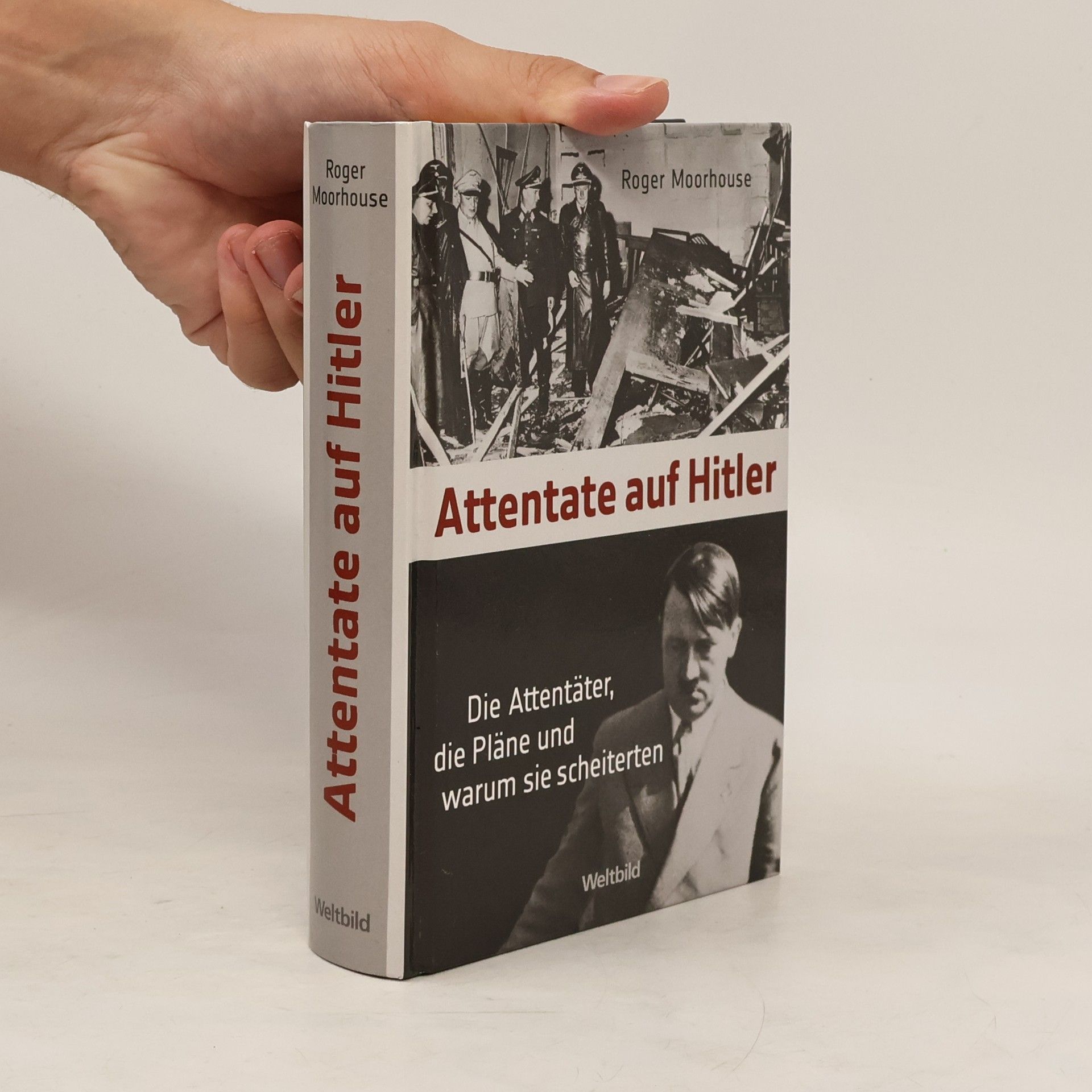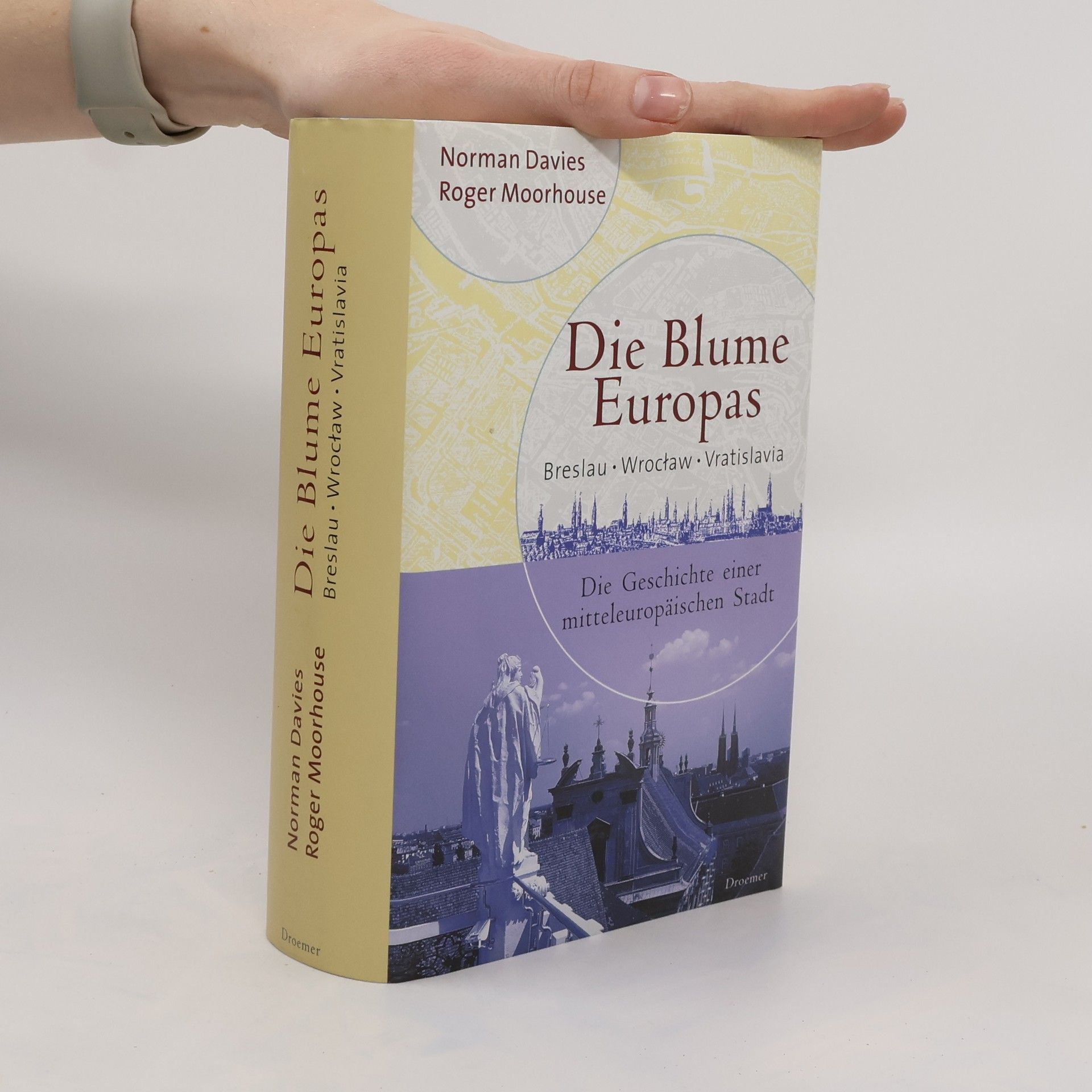Roger Moorhouse Bücher
Dieser Historiker ist auf Nazi-Deutschland spezialisiert und erforscht entscheidende Ereignisse und Persönlichkeiten dieser Ära. Seine Werke befassen sich mit komplexen Beziehungen und dramatischen Momenten, die das 20. Jahrhundert prägten, und bieten den Lesern eine fesselnde Reise in die Vergangenheit. Der Ansatz des Autors verbindet gründliche historische Forschung mit packender Erzählweise, die vergangene Ereignisse lebendig werden lässt.







First to Fight : The Polish War 1939
- 400 Seiten
- 14 Lesestunden
Drawing for the first time on Polish, German and Soviet sources, First to Fight is the definitive history of the German invasion of Poland, which opened the war in September 1939. Roger Moorhouse provides a dramatic narrative of military events, brought to life by a select cast of generals and politicians, soldiers and civilians from all sides. In the process, First to Fight explodes many of the myths that still surround the campaign and challenge our understanding of how Britain and France entered the war. Did Britain and France assist their Polish ally to the best of their abilities when the German armies crossed the border on 1 September 1939? While they went to war with Germany, why did they not declare war on the Soviet Union when its troops invaded Poland from the east later in the month? And if the violation of Poland had been the reason to go to war in 1939, how could the Western Allies justify handing the country over on a plate to Stalin in 1945? Published to tie in with the 80th anniversary of the outbreak of the Second World War, First to Fight explodes many of the myths around what is a shameful chapter in both British and French history, and forensically examines a pivotal moment in the war's history.
First to Fight
- 400 Seiten
- 14 Lesestunden
A new and definitive account of the German invasion of Poland that initiated WWII in 1939, written by a historian at the height of his abilities. 'Deeply researched, very well-written... This book will be the standard work on the subject for many years to come' - Andrew Roberts, author of Churchill: Walking with Destiny The Polish campaign is the forgotten story of the Second World War. The war began on 1 September 1939, when German tanks, trucks and infantry crossed the Polish border, and the Luftwaffe began bombing Poland's towns and cities. The Polish army fought bravely but could not withstand the concentrated attack. When the Red Army invaded from the east, the country's fate was sealed. This is the first history of the Polish war for almost half a century. Drawing on letters, memoirs and diaries from all sides, Roger Moorhouse's dramatic account of the military events is entwined with a human story of courage and suffering, and a dark tale of diplomatic betrayal. 'Important... Moorhouse has a wonderful knack for reminding us about the parts of the Second World War that we are in danger of forgetting' Dan Snow ** Shortlisted for the Duke of Wellington Medal for Military History 2020 **
Hitler's Third Reich in 100 Objects
- 272 Seiten
- 10 Lesestunden
Collated by a leading historian of Nazi Germany. First book of its kind for the Third Reich and the Second World War. A wide range of objects that illustrate both high politics and command alongside everyday life.
A portrayal of the German experience during the Second World War - told through the eyes of the citizens of Berlin.
The devils' alliance
- 382 Seiten
- 14 Lesestunden
Explores the causes and implications of the Nazi-Soviet Pact, an unholy covenant whose creation and dissolution were crucial turning points in World War II. Forged by the German foreign minister, Joachim von Ribbentrop, and his Soviet counterpart, Vyacheslav Molotov, the nonaggression treaty briefly united the two powers in a brutally efficient collaboration. Together, the Germans and Soviets quickly conquered and divided central and eastern Europe; Poland, the Baltic States, Finland, and Bessarabia. Thehuman cost was staggering: during the two years of the pact hundreds of thousands of people in central and eastern Europe caught between Hitler and Stalin were expropriated, deported, or killed.
Breslau liegt in der Mitte zwischen Berlin, Prag, Wien, Budapest und Warschau, im Epizentrum zahlloser politischer und militärischer Ereignisse, die Mitteleuropa erschütterten. Auf tausend wechselvolle Jahre blickt die ehemalige schlesische Hauptstadt, die heutige Hauptstadt der polnischen Woiwodschaft Wroclaw zurück. Eine so lange Geschichte hinterlässt Spuren: in den Namen - Breslau, Wroclaw, Vratislavia - ebenso wie im Stadtbild. Zweimal wurde die Stadt verwüstet: beim „Monogolensturm“ 1241 und im Frühjahr 1945 beim monatelangen Kampf um die „Festung Breslau“. Hin und her geworfen zwischen Preußen, Böhmen, Österreich, Polen, war Breslau Grenzstadt, Handelszentrum, Schmelztiegel der Völker und kulturelle Metropole. Jetzt erzählt einer der brillantesten Historiker der Gegenwart, Norman Davies, zusammen mit Roger Moorhouse am Beispiel Breslaus die Geschichte der großen Reiche und ihres Zerfalls, der Kriege und der wirtschaftlichen Blüte, vor allem aber der Menschen dieser Stadt: Juden und Katholiken, Deutsche, Tschechen und Polen, Ihre Schicksale verweben sich zu einem Meisterwerk erzählter Geschichte.
A biography of Hitler by his long-serving press chief and close associate. Fascinating insight into the workings of the Third Reich's propaganda machine. Revealing eyewitness account from with Hitler's inner circle. Includes personal analysis of Hitler and his behaviour.
**A Telegraph Best History Book 2023 and Spectator Book of the Year**The inspirational story of the ordinary people who forged the documents that saved thousands of Jewish lives in World War Two.'Powerful ... gripping ... inspiring' JONATHAN DIMBLEBYBetween 1940 and 1943, a small group of Polish diplomats and Jewish activists in Sw[Bokinfo].
Třetí říše ve 100 objektech
- 272 Seiten
- 10 Lesestunden
Vydejte se s námi do jednoho z nejtemnějších období bouřlivého 20. století – do doby vlády nacistického režimu v Německu. Průvodcem nám bude odborník na slovo vzatý, britský historik Roger Moorhouse, který se na toto zdánlivě dávno vyčerpané téma dokázal podívat zcela novým způsobem: prostřednictvím příběhů typických i neobvyklých artefaktů. Sto pečlivě vybraných předmětů a staveb pokrývá všechny aspekty dějin nacistického Německa, od často probíraných témat, jako je holokaust a druhá světová válka, po daleko méně známé oblasti, k nimž patří sociální politika, technický pokrok či využití propagandy. Příběhy všech artefaktů Moorhouse čtivě a současně fundovaně zařazuje do širších souvislostí. Výsledkem je mimořádně plastický obraz tehdejších událostí, k čemuž přispívá i vysoce kvalitní obrazový doprovod, který dává knize téměř ráz výstavního katalogu. Předmluvou knihu opatřil profesor Richard Overy, přední odborník na dějiny nacistického Německa a druhé světové války.

